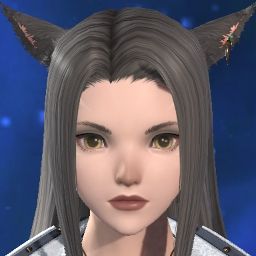"Indeed, we’ve only released duties that we have proven can be beaten with the game’s standard features."
-Yoshi P.
Any other questions?
-
05-13-2022 01:22 AM #151(1)
-
05-13-2022 01:25 AM #152
-
05-13-2022 01:29 AM #153Player

- Join Date
- Oct 2017
- Location
- Ul'dah
- Posts
- 232
- Character
- Ranko Kurosuki
- World
- Brynhildr
- Main Class
- Gladiator Lv 100
 (4)
(4)
-
05-13-2022 01:33 AM #154
"We don't want any of you to use any addons. If you use them it's all your risk and responsibility, we can't stop you from using them. We don't have a way to know what you have installed and currently use and we don't want to bother dealing with it. So, IF you do use them, be discreet, don't get caught."
Since the beginning of times, that was set in stone... with multiple reminders. Since the same time, the majority of the community has abided with the simple rule of "don't show, don't tell". In many cases, people that stream with any are minimal enough that they either don't need to bother with it or simply flies under the radar.
But when you CAN SEE at the very least half a dozen addons on a stream... well, I don't know about you but that goes far past the acceptability limit.
The reason they can't put on a list is, as others said, because they'd have to be responsible for spending their working time to make sure they do what they are only allowed to do. An endless discussion and a can of worms NOBODY wants to open.(2)
-
05-13-2022 05:55 AM #155
-
05-13-2022 06:10 AM #156Player

- Join Date
- Mar 2013
- Posts
- 102
- Character
- Somna Sleepwalker
- World
- Excalibur
- Main Class
- Astrologian Lv 70
They've made it very clear that they have to be at Form/Function Rebel. That's literally the whole point of Yoshi-P bringing up a calculator and Excel as examples of just how asinine people will get when arguing about what is a third party tool. You can boil down all of these threads as "Tell me you don't know which definition of "discretion" to use without saying so."
(0)
-
05-13-2022 06:32 AM #157Player

- Join Date
- Oct 2019
- Location
- Gridania
- Posts
- 1,948
- Character
- Khit Amariyo
- World
- Leviathan
- Main Class
- Sage Lv 100
It is absolutely possible to design for accessibility without trivializing difficulty in so doing. Because most folks I know who want accessibility features don't want additional information about fights, or to make the fight easier; they just want the information that's already there presented to them in a manner that they can actually perceive or interact with.
When wearing my game designer/developer hat, I firmly believe that any in-game mechanic I want the player to be able to react to should have both a visual and an audio tell.
They don't have to be blatant, of course; we have plenty of mechanics where the only difference is what a boss has raised or lowered (which hand, hand vs. tail, etc.), what marker is over a boss' head or around their weapon (four orbs or one orb), what weapon the boss is holding, what color a glow is or what element is visible, etc. But ideally, each of those mechanics should also have a slightly distinct noise, rather than the same 'weapon drawn' noise (or no noise at all).
For directional mechanics, have the noise actually accurate to the position of the mechanic. Leviathan EX does it, as do various Bozjan critical engagements, etc. I know a player with visual impairment who has no trouble with those fights because even if they can't see where Leviathan's waterspout is easily, they can hear where it's coming from.
Similarly, there are people who find the fights in the Ivalice alliance raids easier than other alliance raids because they do have some pretty good audio cues in certain fights, meaning even if you have impaired vision (bad enough that you can't easily make out subtle differences in a boss' pose) you can rely on those as a cue to what mechanic is about to happen. ("I AM THE TRUTH FROM WHICH YOU RUN!" "I AM THE LIES ON WHICH YOU SUP!", for instance. Or any of Mustadio's many, many voiced lines which are tied to specific mechanics, like "I rarely miss!")
That's an example of accessibility they could add to the game which would not trivialize the difficulty. It's not the only one, of course; there are ways to help hearing-impaired or fully-deaf players by adding visual tells to mechanics that are predominantly audio in nature, and so on. You could accommodate folks who have trouble with hitting specific keys due to nerve damage by making it possible to bind multiple keys to the same action -- thus meaning you only need hit one of like four different keys to do that ability, and can strike in the general correct area of the keyboard; it doesn't make the fight any easier objectively, but it means that player has the ability to actually hit the ability they intend to use. Things like that.
And sure, there are some things you won't be able to accommodate, but you can still do a lot without actually impacting the objective difficulty of fights.(1)I aim to make my posts engaging and entertaining, even when you might not agree with me. And failing that, I'll just be very, VERY wordy. Originally Posted by Packetdancer
Originally Posted by Packetdancer
-
05-13-2022 07:28 AM #158
Maahhh! Fricken love the audio and voice line queues! The whole "toast text" garbage can burn in the fiery pits of Tartarus. Why we cannot move this to different location or alter the color/size of this text boggles the mind. Have never been easily able to see these text prompts and use 160 - 200% cast bar size instead.
As someone with tiny hands FF14 would be unplayable without mmo mouse. Reaching Shift + 5 is struggle, reaching Shift + 6 is nearly impossible. Anything to assist with consolidating certain buttons would be most useful. Yup!
The party window being one long list brings great feist. Why is this one specific element so un-customizable? Why do we not have raid panel for 24 man but instead three separate parties? Why can I not split the party window into two separate groups of four? Nope nope instead I must have this gigantic monstrosity near center screen and fricken huge or I cannot see it at'all. Is actually much of the easier to distinguish party health or status by looking at their character (bar above head). Can forget about the debuffs.. have learned to distinguish between different blobs of color for knowing which debuff/buff is active. I have never been capable of easily seeing the white line above them either. Just memorize instead.
Why is cooldown number so tiny? Who vetted this? I memorize this too instead, thank the twelve most are on 60 - 90 - 120 seconds.
Sadness inducing that there are existing community made fixes to 90% of my issues but cannot speak about them or install them without risking a ban. At the least not here. Yeah yeah know you can practice the whole do not tell approach which is fantastic for friends/family. Tis not so useful when someone in game asks about "How can I make this bigger?" and I must inform them that you cannot.(1)
-
05-13-2022 07:58 AM #159Player

- Join Date
- Oct 2019
- Location
- Gridania
- Posts
- 1,948
- Character
- Khit Amariyo
- World
- Leviathan
- Main Class
- Sage Lv 100
I mean, moreover, the toast text is only very rarely useful to actually reading fight mechanics; yes, sometimes you have fight-specific mechanics that are telegraphed in text, most notably Cutter's Cry with the "The ram's eyes burn blue." and "The dragon's eyes burn violet."
And while you can make it easier for sprouts in that fight by giving them mnemonics ("If it's violet, stay by it; if it's blue, better shoo!"), those are only useful for that fight and there are many, many, many other chimeras (or garms, or shadowcourt hounds, or...) in the game. Far better to teach them that it's the Ram's Voice / Dragon's Voice cast to watch for, and a mnemonic like "Ram means scram." to remember that Ram's Voice is the point-blank AoE you want to get the hell away from (and that Dragon's Voice is thus the donut).
But 90% of the time, if that toast goes off in battle, it's something like "Totomu has returned from his venture!" or "The <random crafted thing> you listed on the marketboard has sold for <some amount of gil>."
Which, I promise you, is not information I need mid-pull in P4S or whatever. Certainly not in large print, right dead-center on my screen. Hesperos does not care if my retainer brought back more Grade 3 Thanalan Topsoil for the FC gardens, so -- at that particular moment -- neither do I.
There are, so far as I can tell, actual (semi-rational) reasons for the alliances being separated, at least. Not least of which is that if you treated all 24 as one party UI-wise, controller users who need to be able to zip through the party list quickly to target people would be trapped in a nightmare when they needed to heal or rez someone.
But the fact that there's sound reasoning behind it doesn't make it less annoying if you need to try to select someone in a different alliance in order to rez their healer or whatever; with default bindings, you pretty much have to just mouseover and click on the person in the little alliance windows.
It is possible to make saner selection logic with KB+M even in the stock game without mods, though.
For instance, FFXIV actually lets you bind selection parameters to the scroll wheel of your mouse. As a result, I have the mouse wheel set to scroll through the enemy list, Alt+Scroll Wheel scrolls through my party list, and Shift+Scroll Wheel will go through my party and the alliances. Control+Scroll Wheel is my actual zoom in/out. Having done this for more than a year and a half, I can very quickly select precisely which target I want (though if I ever replace my mouse with something that has different scroll wheel sensitivity I will be screwed).
I find that's been useful to pick targets to heal/rez quickly, and it's also proven surprisingly useful in PvP. (The enemy team in Crystalline Conflict is, internally, apparently a reskinned aggro list and thus my scroll wheel bindings function on it, leaving me able to select a specific enemy near-instantly with the scroll wheel.)
Yeah, the fact that party buffs/debuffs are generally fairly... compact unless you make the party list ginormous is not ideal. I admit I don't personally have a problem with it -- I actually run the party list at 80% size rather than enlarged -- but I also know that's not a universal experience by any stretch.
Were I designing the game, my accessibility approach would probably to add an additional (optional) UI widget which would show only a subset of the party list -- specifically anyone other than you with a debuff that can be cleansed (or healed to clear), and yourself if you had any debuffs at all. I feel like that would make it much easier for vision-impaired healers both to spot who they could do something for (not necessarily have to, because it would also presumably show things like weak/meaningless poison debuffs that last a shorter time than it would take you to cleanse the party), and to read their own debuffs at a larger size for mechanics where those debuffs really matter, like the Relativity mechanics in E12S phase 2.
But I will also concede that many, many games do not approach accessibility considerations at the beginning of design, and it can be a real pain to add some aspects in after the fact. And even when you do try to approach it from the beginning, it takes time -- and you still won't manage a good solution to every scenario. (Moreover, you can't come up with a good solution to every scenario, not without potentially nerfing the game difficulty in someplaces. Accessibility that eliminates unintentional challenge -- e.g. "your UI sucks if the player has impaired vision/colorblindness/whatever" -- while preserving intentional challenge -- i.e. fight design and whatnot -- is a tricky balance to strike.)
I mean, even in my own case, it was specifically the fact that I made a gaming friend who was almost entirely deaf, and that one of my best friends in WildStar had severe nerve damage to his hands, which taught me to approach game design from an accessibility standpoint. And that was well after I was no longer writing games for my day job; by then, I was only doing so in my spare time as a lower-stress (e.g. crunch-time-free) hobby.(0)I aim to make my posts engaging and entertaining, even when you might not agree with me. And failing that, I'll just be very, VERY wordy. Originally Posted by Packetdancer
Originally Posted by Packetdancer
-
05-13-2022 08:54 AM #160
Is somewhat of the embarrassing but had no clue this text even existed until friends pointed it out. Thank the twelve it is not used frequently! Much confusion too during my first Rabanastre run where everyone was posting in the chats to "Read the text". Uncertain why but I just cannot see it, now looking for it specifically I do see blurry text out of corner of vision. Cannot cannot cannot stress how important the audio queues in Rab were for a Mia. I would still love to be capable of moving this text, really really uncertain why this is not already feature. I hope it will become one soon-ish.
Aye This is what I always must do. Have heard you can customize these windows extensively from the extended family using community made tools. Scroll helps some friends more then me, I always overshoot stuffs for reasons would rather not specify. Does assist in getting near my target though (My mom of all the people showed me scroll to target. She got the biggest hug for that!).
This is what I always must do. Have heard you can customize these windows extensively from the extended family using community made tools. Scroll helps some friends more then me, I always overshoot stuffs for reasons would rather not specify. Does assist in getting near my target though (My mom of all the people showed me scroll to target. She got the biggest hug for that!).
All I wish for is some way to customize these panels to look similar and be more easily distinguishable for me. Watching certain friends snapshot heal into other alliances brings sadness. I wonder, how the heck did you even see that they were low so fast!? Uncle showed me a raid hud from when he played WoW and.. well it blew the mind.
Uncle showed me a raid hud from when he played WoW and.. well it blew the mind.
Must keep mine at a uummm, a crisp 130% which you can probably imagine takes up significant screen space. Because it is in "I" shape format it takes up more space then it should if it were customizable. By this I mean, I wish I could split the frames exactly as you can the target element. This would enable me to sort the party into blocks of four or two by two by two, etc. Could freely move the buff/debuff bar above each party member.
This is my biggest issue with the approach Square choses for third party tools. You are most correct, will never design the perfect UI. Which is why you do not have to. Can understand their approach but feel there is probably better solution then blanket ban. Am not willing to install these things because I do not wish to even chance losing my account for it. Seeing that so many of them would improve my experience though causes feist.
Wish there were more developers out in the wild wild west of software development that were like yourself. Do not mention this kinda stuffs often because am not comfortable doing so but all this talk of plugins brought it to the front of my mind. Some of the things being said on these forums boggle the mind..
Do not see how my uncle (late 60s) using fancy UI that helps him actually be able to play a game in a PvE setting and shot call for his static is cheating. Asked him if this ever came up in other mmos and was informed yup! Buuuuut it was shut down pretty darn quickly. He is unsurprised anti-modding is popular way of thinking in FF14. He was also not surprised in slightest that downright vitriolic comments were popping up either.
Last post of the day for me! TL;DR - Can understand where Square is coming from but feel blanket banning all third party plugins is not the correct solution.(0)



 Reply With Quote
Reply With Quote














